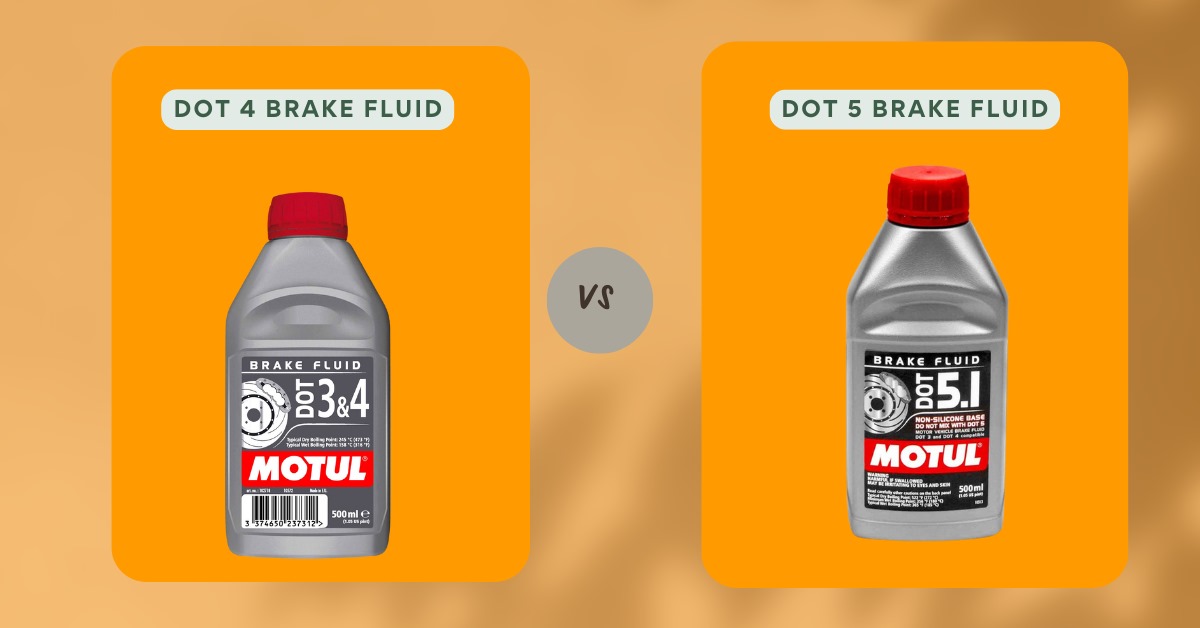Ensuring Brake Fluid Compatibility: DOT 4 vs DOT 5

Explore the critical distinctions and compatibility issues between DOT 4 and DOT 5 brake fluids to ensure optimal vehicle performance and safety.
Understanding Brake Fluid Types and Their Importance
Brake fluids are a critical component in the hydraulic braking systems of vehicles. They serve as the medium through which force is transferred from the brake pedal to the wheel brakes. The fluid's properties play an essential role in ensuring consistent brake performance and response, especially under varying temperatures and driving conditions. It is vital to understand the different types of brake fluids available, such as DOT 4 and DOT 5, as each has unique characteristics that affect braking efficiency and system compatibility.
The Department of Transportation (DOT) categorizes brake fluids based on their chemical composition and boiling points, necessitating careful consideration when selecting the right fluid for a vehicle. The use of an incompatible brake fluid can lead to brake system damage, reduced performance, or even failure, which highlights the importance of understanding the differences between brake fluid types.
Chemical Composition of DOT 4 and DOT 5 Brake Fluids
DOT 4 brake fluid is a glycol-based fluid, which is compatible with the rubber components commonly found in brake systems. It is hygroscopic, meaning it absorbs moisture from the environment, which can lead to a decrease in its boiling point over time. This characteristic necessitates regular fluid changes to maintain performance. In contrast, DOT 5 brake fluid is silicone-based and does not absorb moisture, making it less prone to boiling point degradation. However, its hydrophobic nature can lead to moisture pooling in certain areas of the brake system, potentially causing corrosion.
The silicone-based composition of DOT 5 fluid also means it is not miscible with glycol-based fluids. This incompatibility can create problems if DOT 5 is added to a system that previously contained DOT 4, as it can lead to system malfunctions and reduced braking efficiency. It is also worth noting that DOT 5 fluid is typically used in specialized applications, such as military vehicles or classic cars, where its non-hygroscopic properties are particularly beneficial.
Performance Differences: Boiling Points and Viscosity
The boiling point of brake fluid is a critical performance indicator, as it determines the fluid's ability to resist vaporizing under high temperatures. DOT 4 fluid typically has a lower boiling point than DOT 5, making it more susceptible to 'boiling' under severe braking conditions, which can result in brake fade or loss of braking power. Conversely, DOT 5's higher boiling point provides a larger margin of safety in high-temperature situations, but it may not be necessary for most typical driving conditions.
Viscosity, or the fluid's resistance to flow, is another important factor. DOT 4 fluids are generally designed to operate effectively across a broad temperature range, making them suitable for modern vehicles with advanced antilock braking systems (ABS). DOT 5 fluids, with their different chemical makeup, have different viscosity characteristics that may not be compatible with ABS systems that are calibrated for the more common DOT 3 or DOT 4 fluids.
Compatibility Concerns with Brake System Components
When considering brake fluid compatibility, it is crucial to take into account the materials used in the brake system components. DOT 4 fluids are typically compatible with the rubber seals, hoses, and gaskets used in conventional brake systems. In contrast, DOT 5 fluids can sometimes cause swelling or other adverse reactions in certain rubber components not specifically designed for use with silicone-based fluids.
The compatibility of brake fluid also extends to how it impacts the internal components of the brake system, such as the master cylinder and calipers. Using the incorrect type of fluid can lead to corrosion, seal degradation, and other issues that compromise the integrity and performance of the braking system. Vehicle manufacturers often specify the recommended type of brake fluid for each model, and adhering to these recommendations is critical for maintaining proper function and longevity of the brake system.
Best Practices for Selecting and Changing Brake Fluid
When selecting a brake fluid, it is essential to consult the vehicle's owner manual or a professional mechanic to determine the correct type of fluid for your specific vehicle. If considering switching from DOT 4 to DOT 5, or vice versa, it's important to completely flush the brake system to avoid mixing incompatible fluids, which can lead to system damage.
Regular maintenance and fluid changes are crucial for preserving the effectiveness of the braking system. Due to the hygroscopic nature of DOT 4 fluid, it should be changed more frequently to prevent moisture accumulation and boiling point reduction. For DOT 5 systems, while the fluid itself may not degrade as quickly, it is still critical to perform regular system checks to ensure that moisture has not compromised any component. Regardless of the type, always use fresh, sealed containers of brake fluid to ensure the absence of contaminants that could affect braking performance.

 Loading..
Loading..